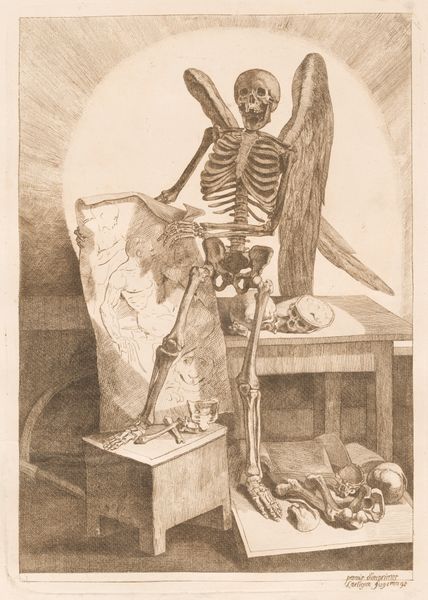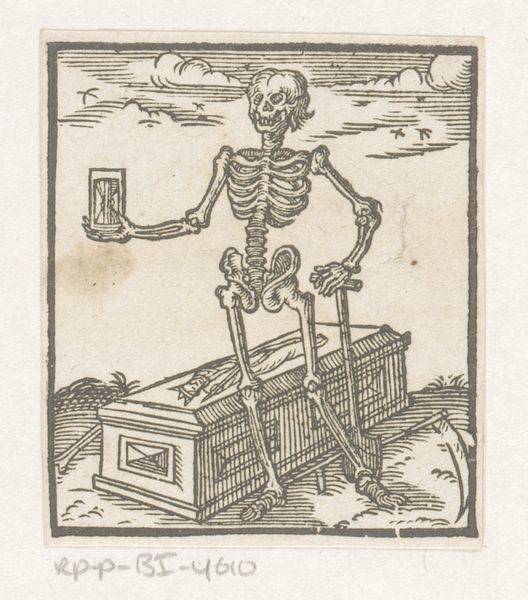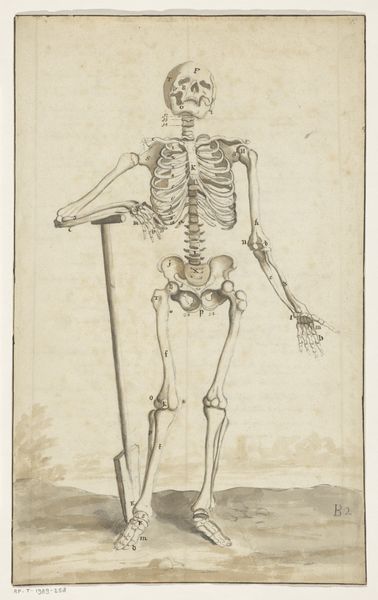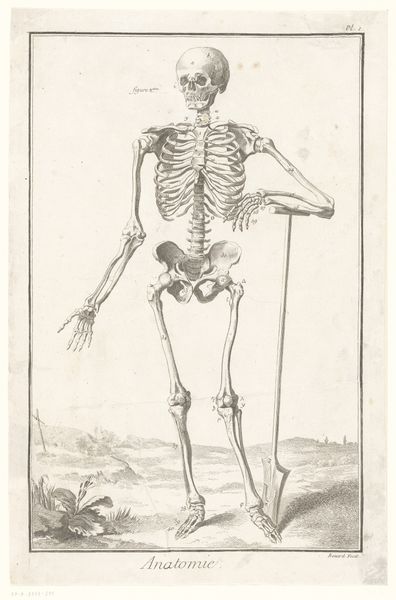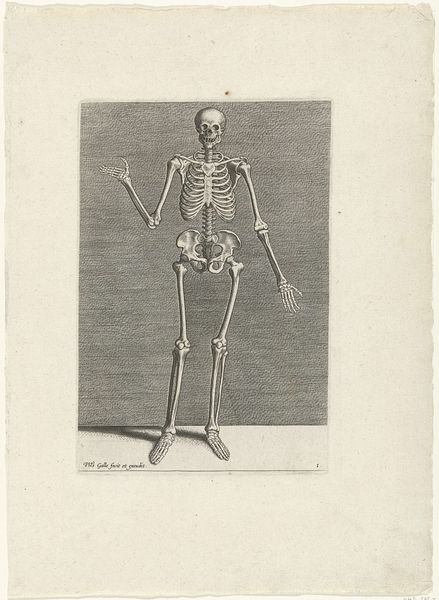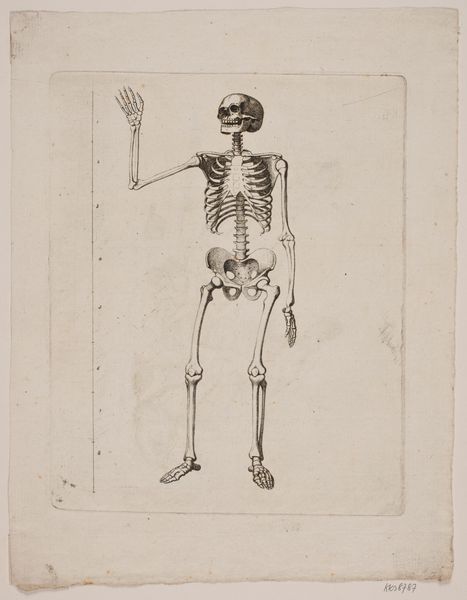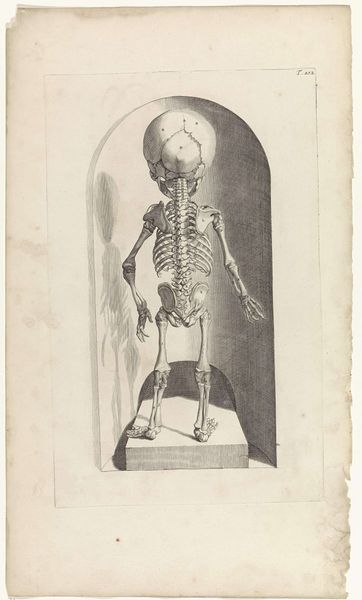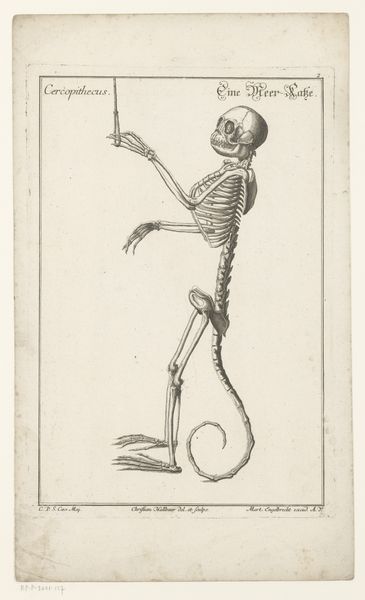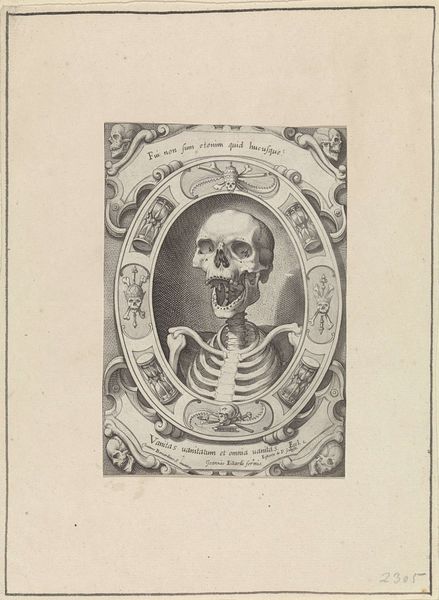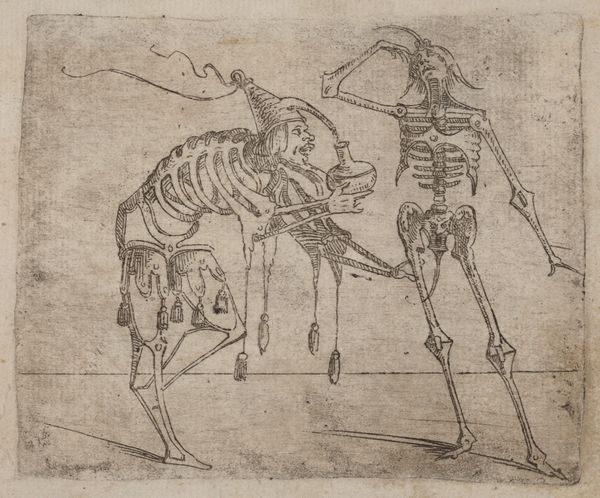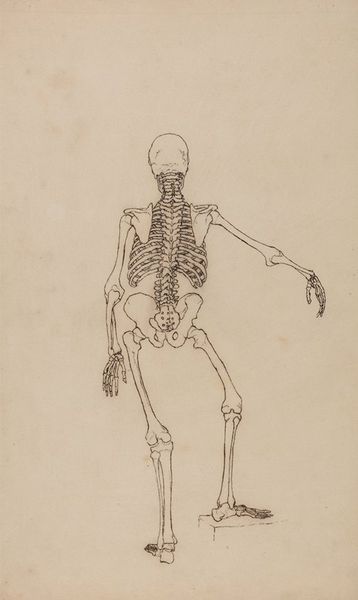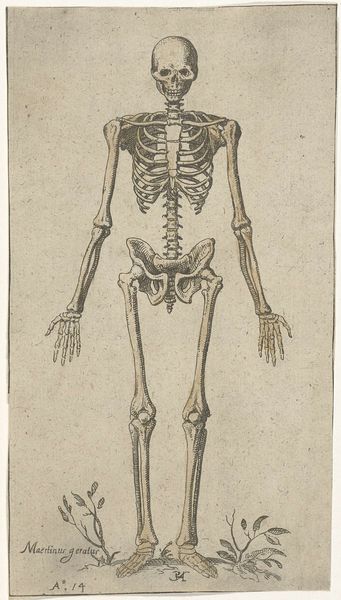
print, engraving
#
medieval
#
allegory
# print
#
old engraving style
#
figuration
#
momento-mori
#
line
#
history-painting
#
engraving
Dimensions: width 80 mm, height 49 mm
Copyright: Rijks Museum: Open Domain
Curator: Let’s discuss this arresting print, “Personification of Death,” created anonymously sometime between 1500 and 1549. Editor: Stark, isn't it? The immediate impression is one of linear precision and looming morbidity, emphasized by the black ink against the pale background. The detail in those skeletal forms is impressive. Curator: It is. As a "memento mori," it served a clear didactic function. Prints like these, widely disseminated, reminded viewers of the inevitability of death and the importance of living a virtuous life, very much in line with late medieval anxieties around salvation. The culture it reflects... Editor: I'm fascinated by the tension in the composition. That stark skeletal figure—death itself—almost seems to preen with its hand on its hips. The figure's gaze somehow humanizes it. And wings, like an angel's, are a twist I find very odd; it carries a scythe. Is the intent to ennoble death somehow? Curator: Perhaps, but consider the broader visual culture. The winged skeleton merges familiar Christian iconography with the grim realities of the plague and constant warfare. It is not an ennobling but more a way of visually dominating a complex social dynamic into something easily represented. Print culture shaped and reinforced those perspectives. Editor: It’s that assertive line work that grabs me, defining every rib, every joint. See how those parallel lines of engraving form the shadow, adding dimension to something inherently flat? The engraver masterfully used technique to amplify the message. Curator: Precisely. And consider the Rijksmuseum as its current home. Doesn't the museum's institutional framing lend it a legitimacy, distancing it from its original, possibly more ephemeral, existence as a cheaply bought and sold broadsheet warning about morals? It prompts us to ask what constitutes 'art' and what purpose these objects are allowed to serve across time. Editor: Absolutely. The artwork’s form enhances the potent symbols of human mortality we recognize today, five centuries later. I remain taken by the sheer craftsmanship within the framework. Curator: A powerful intersection of form, technique, social narrative, and a history all framed by the institution, wouldn't you agree? Editor: Indeed. I look at this small engraving now with so much to consider.
Comments
No comments
Be the first to comment and join the conversation on the ultimate creative platform.
